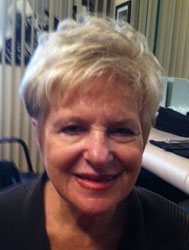12
Aug
2021
2021
How and When to Say No
by Margarita Tartakovsky, MS
Originally published at PsychCentral.com
Many of us hesitate to say no to others. With mindful tips like these, saying no is an emotionally intelligent skill anyone can master — really!
It’s just two letters, and yet saying no can feel really hard — even complicated. For many of us, saying no doesn’t just feel awkward. It feels wrong.
So, whenever anyone asks you to do almost anything, you might blurt out, “Yes! Sure! Of course! Happy to!”
But in reality, you may feel the opposite. Maybe you’d rather be doing about a thousand other things. Or maybe you’re OK with saying yes, but it’s not the best thing for your daily bandwidth or mental health.
Here’s the good news: Saying no is a skill you can sharpen. The more you say no, the more natural it’ll feel.
Here are several ways to build the skill of saying no in different situations — even if it feels like you’re doing it from the ground up.
Why saying no feels hard
For starters, it’s important to realize that if saying no is challenging for you, you’re not alone. As social psychologist Dr. Vanessa K. Bohns writes in a 2016 research review examining people’s influence over others, “Many people agree to things — even things they would prefer not to do — simply to avoid the considerable discomfort of saying ‘no.’” For example, a series of small studies, published in 2014, found that when asked, many people would acquiesce and commit unethical acts, such as telling a white lie or vandalizing a book — even when they felt these acts were perceived as wrong. As social creatures who want to be part of the herd, we also want to preserve our relationships. So, we might blurt out yes because we don’t want to be seen as difficult, says Dr. Emily Anhalt, a clinical psychologist and co-founder of Coa, an online mental fitness club. Or, we don’t want to disappoint a good friend or hurt someone’s feelings, notes Dr. Nicole Washington, a board-certified psychiatrist and the chief medical officer of Elocin Psychiatric Services. Another reason yes pours out of us? Our past. According to Anhalt, while growing up, you might’ve not learned to advocate for yourself. “It’s also possible that you say yes because you deeply want to help. But you forget that your ability to accommodate others isn’t an endless well,” Anhalt says. In other cases — like a work situation — we might worry that saying no says something about our ability to accomplish a certain task, adds Washington. Put another way, we think declining makes us look incompetent.Why saying no is a good — no, great — thing
When you struggle with saying no in personal or professional situations, it helps to remember the self-preservation in passing things up. “Saying no is one of the best forms of self-care we can engage in,” Washington says. She notes that saying no supports us in:- creating space in our schedules to rest and recharge
- engaging in activities that actually align with our current goals
- setting boundaries with loved ones and colleagues
